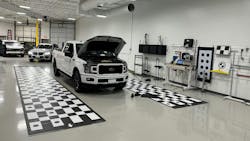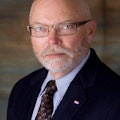It was nearly a year ago that GEICO announced an agreement with Repairify — specifically their brand asTech — that included standardized pricing, particularly for their direct repair program (DRP) shops. It was stated at the time that the plan was to “reduce friction.” Later, State Farm rolled out a new agreement with Opus for their Select Service DRP shops. It’s been getting a lot of attention in recent months. This arrangement also has pricing terms. I have been told that there are other insurers forming relationships and pricing structures who are waiting to see what happens with the GEICO and State Farm programs before rolling theirs out.
Based on what I see in shops, read in the trade press, and hear at industry conferences, there appears to be less clarity, and there is certainly more friction than before.
Examining the State Farm Agreement
Let’s look at a few aspects of the State Farm agreement. A statement from their Select Service Program Administration says, “State Farm will require the use of ADAS MAP, an ADAS calibration software system for vehicles requiring calibration. The Opus IVS software scrubs estimates and/or repair orders and identifies VIN-specific ADAS systems, necessary calibrations and provides OE repair procedures.”
(Do you remember when State Farm respected the ability of shops to make their own choices, often called “open platform”, on things such as estimating systems, parts procurement systems, and CSI vendors? How times have changed!) This statement in State Farm’s document is misleading, as the system will identify most of those items, perhaps even almost all. But by the admission of this vendor — as well as other vendors with a similar product — these systems are not all-encompassing and may not provide all the information needed regarding build data, nor all the necessary required operations or repair procedures. While these systems are a great aid, one must still review the original equipment manufacturer (OEM) repair procedures to get ALL the necessary repair information.
Interestingly, to reinforce my points and to illustrate the conflicting information, the Opus MAP Agreement Portal states, “….it is possible that the Software may not always have full coverage for a vehicle, and it is possible for errors in results. You further acknowledge and agree that you shall be fully liable for any and all decisions and actions you make as a result of using the Software and Support Services under this Agreement, and that any results from using the Software should be checked against the OEM factory information if such results are used to determine the functionality of safety equipment on a motor vehicle.”
The State Farm statement also says, “……. the amount billed for calibrations should not exceed the price State Farm would have paid per the part code table. State Farm has also identified local mobile/car side providers that work in the area on the Opus landing page.”
One could question why a mobile ADAS business should be associated with the pricing standard. Their cost of operation is obviously lower than that of a calibration center. And the calibration center would more likely be in compliance with OEM repair procedures regarding necessary floor levels and controlled lighting without interference. While checking, I found a few local vendors on the Opus page. I suspect it varies in different markets. At least one of the vendors listed is part of a large collision consolidator with close DRP ties to State Farm. One of the others is part of a glass business. Whatever each represents, this arrangement is rife with concerns over a lack of credibility and conflicts of interest. Many collision repairers would be reluctant to deal with an ADAS company that is part of a competing business. Our local State Farm people are indicating that all shops have to comply with their pricing model because this handful of shops agreed to.
Because a small number of vendors elect to do something to appease an insurer, that shouldn’t necessarily become the standard among many vendors or repairers.
I’ve read that in some markets, State Farm people have stated that this program is still a test and may change. Yet I know in at least a few markets that non-Select Service shops are not being paid any more for their ADAS operations than what is in the parts code table. Still, there are reports of pricing flexibility in some markets. And in at least one market, State Farm is refusing to cover the costs of transporting vehicles to calibration centers because their statement implies the viability of mobile calibrations. Of course, those don’t require transporting vehicles. And again, based on OEM repair procedures, we know many mobile calibrations are not proper and potentially cause erratic/unsafe function . Supposedly, there is at least one mobile vendor in my local area with a calibration center who will transport vehicles without charge. We haven’t seen evidence of that yet. And again, because a small number of vendors elect to do something to appease an insurer, that shouldn’t necessarily become the standard among many vendors or repairers.
OEM Procedures are the Standard
When we talk about OEM repair procedures, we also should bring up other OEM statements. These could include job aids, technical service bulletins, and position statements. There have been some insurers who publicly acknowledge the importance of repair procedures but cast doubt on these other statements. Some say they should only be taken on a case-by-case basis, or subject to interpretation or discussion. Do they think only the competent OEM people write the repair procedures and incompetent ones write the others? The truth is that they come from the same manufacturer’s staff who have responsibilities to their company and to the public with whom they share this information. And many of these statements, aids, etc., are of immense value to provide clarity on how ADAS work should be performed. It is up to us as repairers to find OEM repair information and use it. Remember, there is only one repair standard; it is the standard set by the manufacturer. I-CAR, which provides great training and direction, has acknowledged from their beginning that the OEM procedures (information) are THE standard.
Some shops have abused the ADAS situation by charging exorbitant fees. But that shouldn’t mean that the majority of shops have to accept pricing on the lower end of the range.
These pricing matrices are an issue unto themselves. There is a lot of discussion about some being formed that have different tiers for different operations for different brands. I understand the concerns of insurers that some shops have abused the ADAS situation by charging exorbitant fees. But that shouldn’t mean that the majority of shops have to accept pricing on the lower end of the range. As an industry and as individual businesses, we need to establish fair pricing that accommodates a reasonable profit in a well-run business. And in the ADAS business, we should not use the typical old philosophy that all education and equipment and site expense is simply a business expense, and that we only charge for labor based on the time spent by a tech. A calibration center has huge equipment purchases with expensive and time-consuming updates. Much of our equipment quickly becomes outdated. And our training costs are huge and increasing with changing technologies. Simplistic pricing models are preferable to minimize friction.
The GEICO arrangement shares some of these aspects causing friction and lack of clarity, particularly regarding the pricing model, questions on tooling (such as aftermarket versus OEM scan tools), approved services vendors, procedures, and liability.
Over the years, especially when there is a significant change in the collision repair industry, there have been many cases where a vendor elects to form a relationship with an insurer in an effort to gain market share. Usually, these relationships rely on the vendor offering lower cost solutions. Unfortunately, sometimes the cost reduction comes from cutting corners by deviating from OEM repair procedures. Often the end result is that competing vendors cut their pricing to protect their market share. At the end of the exercise, there isn’t necessarily a big shift in market share and instead all the vendors end up doing about the same thing as before except that all are performing the work for less, often the standards are “watered down” (compromised), and the insurers laugh all the way to the bank. And the consumer is at risk of receiving poorer quality with a chance of compromised safety.
Whenever collision businesses have specific repair vendors and pricing structures forced upon them, there is cause for concern and apprehension.
The blurred line between recommendation and requirement
I reached out to Revv, a software company who provides ADAS repair information similar to some of the other providers. But Revv has not elected to partner with an insurer as some of the others have.
“The only consistent requirement we've seen within certain DRP programs is alignment with established calibration pricing guidelines,” explains Joel Adcock, director of partnerships at Revv.
This distinction matters significantly as shops nationwide report pressure to:
- Adopt specific third-party ADAS identification platforms
- Utilize designated calibration providers from restricted lists
- Compromise on OEM procedures when they exceed reimbursement thresholds
"The line between recommendation and requirement has become dangerously blurred," Adcock notes. "We’ve heard firsthand from our customers and the ADAS community the confusion and anxiety shops are experiencing, potentially compromising the repair integrity shops work hard to maintain."
As a comprehensive, tool-agnostic ADAS solution, Revv delivers OEM documentation, audit-ready invoicing, and compliance support in a single platform. Revv is encouraging shops to ask a different kind of question:
Are we following procedures because we must? Or is it because we’ve been led to believe we have no other option?
For repair facilities navigating these waters, Revv recommends:
- Requesting written documentation of any purported requirements
- Consulting directly with insurer representatives about actual network obligations
- Maintaining records of OEM-compliant procedures regardless of reimbursement challenges
“We stand with repairers who want to do the right thing,” Adcock added. “And sometimes, the first step to doing the right thing is simply asking: What’s really required here?”
Obviously, our industry is in a state of uncertainty on this topic, and in many ways, these insurer programs are adding to the lack of clarity as well as causing increased friction. That’s despite the claims of some of those behind these insurer/software relationships that part of their goal is to drive more acceptance of performing ADAS work. I don’t doubt that there may be some noble intent. But whenever collision businesses have specific repair vendors and pricing structures forced upon them, especially with structures that seem to favor insurers financially and alienate some vendors, there is cause for concern and apprehension. As Joel Adcock said, I believe we as repairers should focus on doing the right thing. We are the repair experts. We should continue to educate ourselves and rely on facts for our repair decisions and pricing negotiations. We should repair vehicles properly, based on OEM repair information, proper tooling, and price our work accordingly, standing up against any unfair or unreasonable pricing demands. Our industry is typically slow to adjust to new technologies and pricing structures. We as repairers need to make sure that our voices are heard and that we have our appropriate influence within our industry.
About the Author
Darrell Amberson
Vice president of industry and OEM relations
Darrell Amberson is the vice president of industry and OEM relations at Quality Collision Group.
Previously, he was president of operations for LaMettry's Collision, a 10-location multi-shop operator in the Minneapolis area purchased by Quality Collision Group in November 2024. Amberson has more than 40 years of collision industry experience and served as chairman of the Collision Industry Conference for the 2021-2022 term, as well as interim chairman for the first two CIC meetings of 2024.

